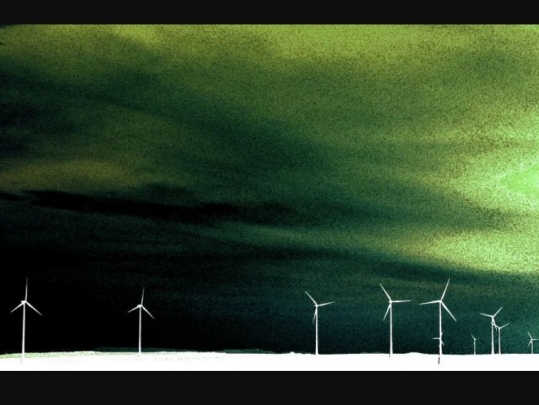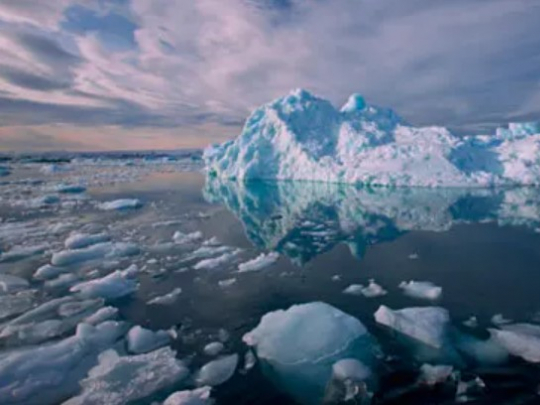Texas ‘Deep Freeze’: Urgent Climate Warning but Not How You Think

In the unfolding extreme winter tragedy in Texas as well as many other regions of the United States not prepared for severe winter weather, a notable point is that much of the vast windmill batteries across the state, supposed to generate 25% of the state electric power grid, have frozen and are largely useless. The recent severe winter weather across not only the continental USA but also large parts of the EU, and even the Middle East, warrants a closer look at a subject that has been too long ignored by the UN Intergovernmental Panel on Climate Change (IPCC) reports, as well as by a new group of academics known as Climate Scientists. That is, the influence of our sun on global climate.
Cold Climate Change
On February 14 a record Arctic cold front swept from Canada far south to the southernmost parts of Texas on the Mexican border. The immediate impact has been power outages for up to 15 million Texans who as of February 17 remained without heat and electricity, as almost half the wind units were frozen and inoperable from ice storms, many permanently. Texas over the past five years has doubled its share of wind generation to the grid in a rush to adopt a green energy profile. With some 25% of the state electric grid from wind sources, almost half that is out of commission, many permanently, from the storm.
Tyler, Texas, once known as the “Rose Capital of America,” saw temperatures of near -20 C. Gas processing plants across Texas are shutting as liquids freeze inside pipes further reducing power just as demand for heating fuel explodes. Heating fuel prices in Oklahoma jumped 4000% in two days and are rising. Wholesale prices for delivery in Texas are trading as much as $9000 per mega-watt hour. Two days before the storms price was $30. In a summer peak demand, a price of $100 is considered high.
Reduced gas supplies from Texas to Mexican power companies have led to blackouts in northern Mexico, with almost 5 million households and businesses left without power on February 15.
The Green Energy Fallacy
In addition US oil production, centered in Texas, has plunged by a third, and more than 20 Gulf Coast oil refineries are blocked as are grain barge shipments along the Mississippi River. Several analysts of the deregulated Texas grid model point out that had the state maintained a “reliable emergency backup” such as is possible with nuclear or coal power, the blackout could have been averted. Recently Texas has forced six coal power plants to close since 2018, owing to state rules that force power companies to take the subsidized wind and solar power, undercutting the cost of their own coal generation. It simply forced them to shut down functioning coal plants that generated 3.9 GW. Had those still been on line, sources say the blackouts could easily have been averted. Unlike current wind technology or solar, coal and nuclear plants can store up to a month or more capacity on site for power emergencies.
While in northern states like Minnesota where severe winters are common and prepared for, Texas has no such requirements for reserve capacity. For example, the Minnesota Public Utilities Commission requires plants to have enough reserve capacity online to ensure the power stays on during extreme circumstances. Instead, Texas operates an “energy-only” market, where wholesale power prices are seen as an adequate incentive to bring more power plants online. The aim of the energy only model was to make intermittent wind and solar more profitable to increase their market share over conventional alternatives like coal or nuclear.
The state grid model forced Texas coal and nuclear plants to sell electricity at a loss on the market because they are unable to reduce their electricity output when high wind and solar output force prices into the red. Ultimately, it forced the unnecessary closing of the six coal plants, just what the green energy advocates wanted. The flaws in the model are glaring, as is the growing dependence on unreliable wind and solar options to get a dubious zero carbon footprint.
Grand Solar Minimum?
However there is a far more alarming lesson to come out of the Texas disaster. That states like Texas and countries across the globe are mandating trillions of dollars investment in Green Energy to create the UN 2030 goal of Net Zero Carbon by 2050, by turning to manifestly unreliable solar and wind to replace oil, gas and coal power, and even carbon-free nuclear power, is the opposite of what we need if solar cycle analysis is accurate. That flaw has roots in a several-decade campaign by the UN IPCC and political figures such as Al Gore and a lobby of scientists whose careers depend on ignoring the greatest factor affecting Earth Climate and climate change, one which is definitely real—solar cycles.
Unlike the computer models of the climate scientists which project a linear rise in Earth temperature as “manmade” emissions of CO2 rise, the unproven “Greenhouse Effect,” Earth temperature and climate changes are non-linear. They have been proven, going back several thousand years, to be cyclical. And CO2 emissions to not drive the cycles. If this is so, we as a human species could well be implementing policies which will leave great parts of our world totally unprepared and vulnerable to far worse and more prolonged climate changes than the recent disaster in Texas.
According to the US NASA, the planet just entered into a new solar cycle. They predict that the current 11 year solar cycle, known as Cycle 25, which began in 2020, “will be the weakest of the last 200 years.” If so that would put it in the time of what is known as the Dalton Minimum which went roughly from 1790 to 1830.
Sunspots or dark spots on the sun surface that are usually accompanied by huge magnetic energy flares out of the sun, have been measured daily since the process was begun at a Zurich, Switzerland observatory in 1749. It was noted that the number of sunspots or solar activity rose and fell in roughly 11 year cycles. Recent research has also identified more complex longer cycles of around 200 years period, and 370-400 years. Solar physicists have numbered the 11 year cycles beginning from 1749, giving us from mid-2020 the onset of Solar Cycle 25.
In 2018 a group of solar physicists and mathematicians led by Prof. Valentina Zharkova at Northumbria University in the UK, developed a complex model based on the observed role of the solar background magnetic field in defining solar activity. They could predict that the next Solar Minimum which began in 2020, would approximate the most extreme recent period of solar minimum, the so-called Maunder Minimum, which went from 1645 to 1710. That was termed a Grand Solar Minimum, a prolonged period of extremely low solar activity, and began about 370 years ago.
Zharkova’s group has linked the present minima to a drastic falloff in the sun’s internal magnetic field, a roughly 70% downswing in magnetic field intensity from its average value, arising from regular variations in behavior of the very hot plasma powering our sun. In other words we could be at the early phase of drastic changes in Earth climate lasting several decades. Zharkova’s research predicts that this Grand Solar Minimum period started in 2020, and expects it to last until about 2053.
During the Maunder Minimum volcanic eruptions sending tons of ash high into the atmosphere created dense grey clouds that further blocked solar radiation. Volcanic activity and solar minimum phases are well correlated, believed to come from intensified penetration of cosmic rays on the Earth atmosphere that force greater eruptions.
During the Maunder Minimum, known in the Northern Hemisphere as the “Little Ice Age,” the temperatures across much of the northern hemisphere plunged. According to Zharkova this likely occurred because the total solar irradiance was greatly reduced, leading to severe winters.
A far milder Grand Solar Minimum, called the Dalton Minimum, from about 1790 to 1830, while less extreme than the Maunder period, led to a series of huge volcanic eruptions between 1812-1815 culminating on the record eruption in Indonesia of Mount Tambora, the world’s largest volcanic eruption during historic times. It in turn created so much cloud density from ash that 1816 was known in Europe as The Year Without a Summer.
The cold temperatures saw snow in New York in summer of 1816. Crops across North America and Europe failed in what has been called, “the last great subsistence crisis in the Western world.” In China in 1816 there was a massive famine. Floods destroyed crops. The monsoon season was disrupted, resulting in overwhelming floods in the Yangtze Valley. In India, the delayed summer monsoon caused late torrential rains that aggravated the spread of cholera from a region near the Ganges in Bengal to as far as Moscow.
Volcanic eruptions are in a recent uptick since eruption of two huge volcanoes in November 2020 in Indonesia at Lewotolo and Semeru, as the present Grand Solar Minimum began, tied to the solar-related drop in the magnetosphere, and the stronger influx of solar cosmic radiation penetrating silica-rich magma of the volcanoes.
As Sacha Dobler author of Solar Behavior notes, “As far as temperature is concerned, what is crucial is not the energy that leaves the sun, but how much of this energy is blocked by clouds and how much reaches the Earth’s surface, and how much is reflected back into space by ice and snow.” Higher cosmic ray penetration of the atmosphere during solar minima adds to cloud nucleation as do volcanic eruptions. Dobler adds, “In a Grand Solar Minimum, cosmic rays trigger larger flash floods, hailstorms and – due to jet stream disturbance and mixing of atmospheric layers – local long-duration precipitation events… Due to the shifting jet streams and changing wind patterns, singular heat waves and more wild fires are expected.” In short we can expect unstable, irregular weather events over the coming decade to three decades if solar physicists such as Zharkova are right.
Changing Jet Stream
A significant effect of a major or Grand Solar Minimum we are now entering is changes in the position of our Jet Stream. In periods of high solar activity the jet stream forms a relatively stable belt around the Northern Hemisphere on the level of southern Canada and Siberia, keeping severe winter cold contained. In solar minima such as now, the Jet Stream, instead of forming a stable ring, becomes highly irregular or wavy. That is what allowed the unprecedented Arctic cold as far south as Texas. This irregular and weak Jet Stream allows severe cold and snowfall in some areas and unusual warm pockets in places like Siberia, as well as unusually warm and dry or wet periods. As we advance deeper into the present Grand Solar Minimum by 2030 or so, physicists expect this “extreme” weather change to intensify.
The sun is by orders of magnitude the most influential force affecting Earth climate and its climate changes. Unfortunately for mankind the prevailing group of climate scientists endorsing the narrow untested CO2 manmade global warming hypothesis do not model any effect of changing solar radiation on our climate. The IPCC dismisses the sun as an irrelevant factor, something that is proving extremely dangerous.
Could it be that the Powers That Be behind the likes of Bill Gates or Klaus Schwab know well the coming solar minimum and the fact that this one is likely to be as bad or worse than the 1790-1830 Dalton Minimum? Does this explain their selection of the period 2030 to 2050 in the target for UN Agenda 2030? If the world is spending trillions and diverting precious resources to prepare for “zero carbon,” while the worst solar effects of the past 200 years or more unfold in events such as Texas and other parts of the world experience, it would be a diabolical way to accelerate their population reduction agenda as the world is caught unprepared for severe crop failure and mass famine.
- Source : F. William Engdahl


















